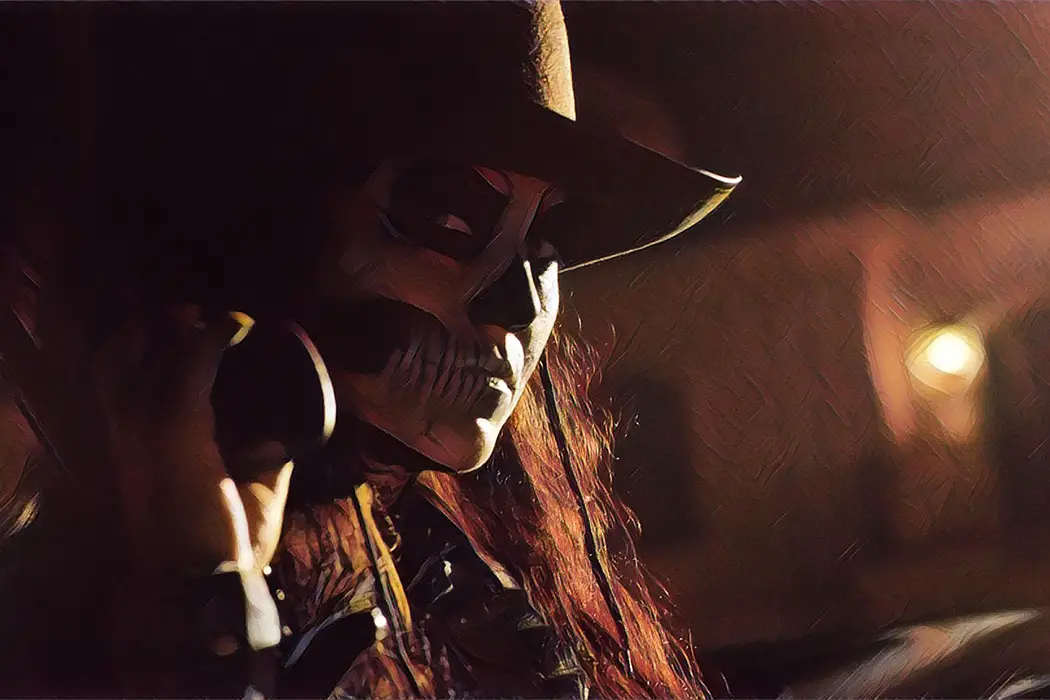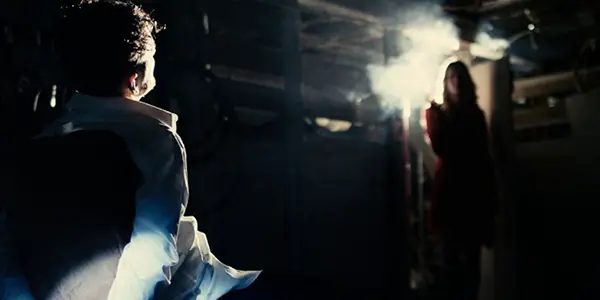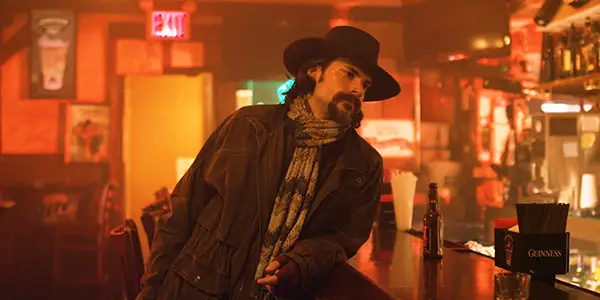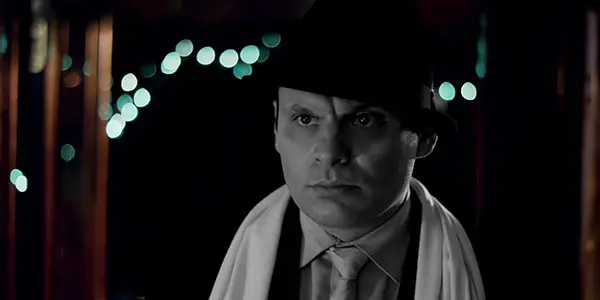PICKINGS: Derivative & Pulpy But Shows Potential

David is a film aficionado from Colchester, Connecticut. He enjoys…
Usher Morgan‘s Pickings is a film that you’ve likely seen before, albeit in various other forms. A crime film taking place in southern America, it imparts elements of spaghetti Westerns and classic film noir, blending them together into its own somewhat misshapen conglomerate.
The film’s derivative elements do sometimes get distractingly overt, yet it’s hard not to pick up on Morgan‘s passion for the genres and for filmmaking in general. Perhaps, as his first feature film (he previously made documentaries and comedy shorts), he simply wished to create a love letter to the genres he holds dear.
Neo-noir
The opening scene of Pickings is set in a dark, smoky room. A man, bruised and bloody, is strapped to a chair, while a woman, with casting shadows on her face, stares at him from across the room. Approaching him, with menace in her voice, she explains the psychology of instinct, a concept by none other than Tony Robbins, in an attempt to scare the man sullen. Another man silently observes from the corner, his face obscured by billowing clouds of smoke.

Placed with no reference point to the story at hand, the scene cleverly and unapologetically displays just what type of film Pickings will be. Shot in limited light, with an emphasis on shadow, it immediately hearkens back to classic film noir or, more recently, the films of the Coen Brothers. The dialogue, meanwhile, with its tongue-in-cheek references, is somewhere closer to a Tarantino film. Even the main character herself, who we soon come to learn is named Jo, is somewhat reminiscent of Uma Thurman‘s Bride from the Kill Bill series.
After this initial scene, we start to focus on the wider story: Jo (Elyse Price) is a mother with a mysterious past. Along with her teenage daughter Scarlet (Katie Vincent), she runs a small town bar called Pickings, located somewhere in rural Tennessee. Inadvertently, the two, along with Jo’s brother Boone (Joel Bernard), get involved with a local mob after two men enter their establishment one evening in an attempt to scare the Lee-Haywoods into submitting to their boss. Little do they know, though: the Lee-Haywoods are not a family you want to mess with.
Spaghetti Western
Besides the aforementioned Tarantino and the Coen Brothers, Pickings also conveniently fits within the revenge story backdrop, which is common to spaghetti Westerns. An overt homage is made at one point when, after a major death has occurred, the straight out of the old West cowboy Boone places his hat on his head, and as the camera pans up the score then comes front and center, building to a series of shouts, whistles, and drumbeats that is clearly reminiscent of Sergio Leone‘s iconic Westerns.

The characters themselves are also pulled straight out of classic films, and though aptly played by the actors (Elyse Price is an especially strong presence), it’s hard to gain the sense that they are anything more than snippets cut out of old magazines. Usher Morgan‘s unwillingness to divert from familiar elements does make the film feel somewhat outdated, and perhaps will only be appreciated by people who enjoy the aforementioned directors or genres as a result. As a whole, though, it’s still not hard to appreciate his clear love for the style of films that he pulls from.
Unique Elements
When each character of Pickings is introduced, a freeze frame of them is shown, with their face animated and their name displayed in large block letters. Though initially seeming a bit tacky, it does further emphasize the nonsensical and playful nature of the film. At one point, during a flashback, the film becomes a fully-animated comic, as it fills in the details of Jo’s former life. Another character, named Sam “Hollywood” Barone (Yaron Urbas), even appears in black and white throughout the entirety of the film.

On their own, these quirks are not inherently bothersome; though the film does tend to overly use the animation in particular, freezing on the characters in mid-action and bringing back the same stenciled outlines. In a way, this is representative of Pickings’ flaws as a whole, with the wish that Morgan would’ve just allowed his film to breathe on its own instead of relying on either homages or gimmicks to drive his story.
Conclusion: Pickings
Derivativeness aside, Usher Morgan‘s ode to classic cinema does manage to at least be an unabashedly entertaining watch. Whether basking in the glory of its noir-style lighting, or admiring its Ennio Morricone-influenced score, or even if just a fan of the hodgepodge of films referenced in some way, there’s at least something here for people to enjoy.
Combining two of the great genres of cinema is not an easy feat, and though Morgan‘s film is uneven, it is at least an indication that he could be someone to look out for in the future. With a little more time and resources spent on expanding his vision, I could see Morgan becoming one of the go-to indie genre filmmakers.
If you had a chance to see it, what are your thoughts on Pickings? Are you a fan of low budget indie films? Let us known in the comments below!
Pickings had a limited release in the U.S. on March 2, 2018. No international release dates are yet known.
Does content like this matter to you?
Become a Member and support film journalism. Unlock access to all of Film Inquiry`s great articles. Join a community of like-minded readers who are passionate about cinema - get access to our private members Network, give back to independent filmmakers, and more.
David is a film aficionado from Colchester, Connecticut. He enjoys writing, reading, analyzing, and of course, watching movies. His favorite genres are westerns, crime dramas, horror, and sci-fis. He also enjoys binge-watching TV shows on Netflix.













